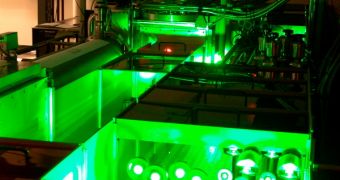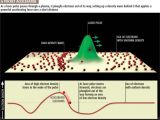The Large Hadron Collider, the most intricate piece of technology our civilization has been able to come up with thus far, has proven once again that no matter how much effort goes into constructing it (20 years) and how much money it costs to build (roughly $9 billion), a large machine is not always the answer. Just like the Titanic, the device broke down within days after it was started. Future projects consider the construction of even larger particle accelerators that would far surpass the LHC.
Luckily for these “megalomaniacs,” scientists around the world are already working on an alternative way of accelerating particles and studying the interactions between them when they collide, but not with the use of such complicated systems, but rather by employing a much more elegant solution, in the form of running pulsing laser beams through a rare state of regular air, known as plasma.
While large-scale accelerators use the sheer size of their circular tunnels to accelerate particles, the approach suggested by Lawrence Berkeley National Laboratory (LBNL) physicist Wim Leemans, who leads the development of plasma-based accelerators at the California-based facilities, is far simpler.
Basically, he advocates the use of air plasma – a state of the air where positive ions are stripped of their negative electrons, and then just “float” among them – in combination with laser pulses of the appropriate intensity, duration and speed.
According to the scientists, the correct form of laser stimulation would cause an extremely fast movement among the electrons, similar to the one a boat leaves in the water. If the wave is big and strong enough, someone could surf on it. In fact, that's exactly what the electrons are doing, gathering speed as they surf down the impulse wave left behind by the laser. The difference between them and a surfer is the speed.
The great part about this new technique is that it promises to find particle accelerating solutions in devices the size of a desk, instead of using large smashers, where their very construction is what prevents them from achieving their maximum potential, in that magnets, and even concrete walls are subjected to the enormous forces emanating from two super-fast streams of matter.
Seeing how in plasma all atoms are already destroyed, there is nothing to stop the speed of the electrons, if the right speed of the high-intensity laser pulse is established. The groundwork for this approach is there, now the funding has to flow to these laboratories, in the US and the UK mostly, as they are spearheading the effort on these fronts.

 14 DAY TRIAL //
14 DAY TRIAL // 
